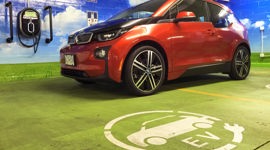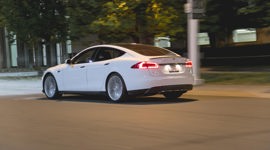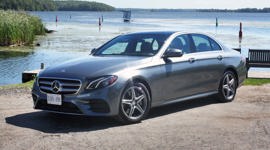Update (July 12): Tesla Model 3 added; Tesla charge times adjusted.
Ready, set, plug in – and go. Electrified vehicles are still just a sliver of the market, but automakers facing ever-tightening fuel economy and emissions standards are adding battery power to help meet them.
Along with hybrid vehicles – which use combined gas/electricity and recharge their own batteries but don’t plug into the wall – there are several electric-only (EV) and plug-in hybrid (PHEV) vehicles on the market.
Is one of them right for you? That depends on several factors, but among the most important is how far it’ll go after you’ve plugged it in. We’ve compiled a list of EVs and PHEVs with their range, along with how long it takes to recharge from a depleted battery to full. We’ve also included the base MSRP for each. Buyers in BC, Ontario, and Quebec will qualify for “green” government incentives off these prices – though the recently elected government in Ontario has brought the long term future of its rebates into question.
Of course, as the saying goes, “Your mileage may vary.” What we have here is each vehicle’s driving range (in kilometres) as per Natural Resources Canada, but what you will actually get under real-world conditions will depend on such factors as your driving habits, ambient temperature, the weight of passengers and cargo, heater and (to a lesser extent) air conditioning use, and if you’re driving in hilly terrain. Use these charts as a guide, not as gospel.
Electric Vehicles
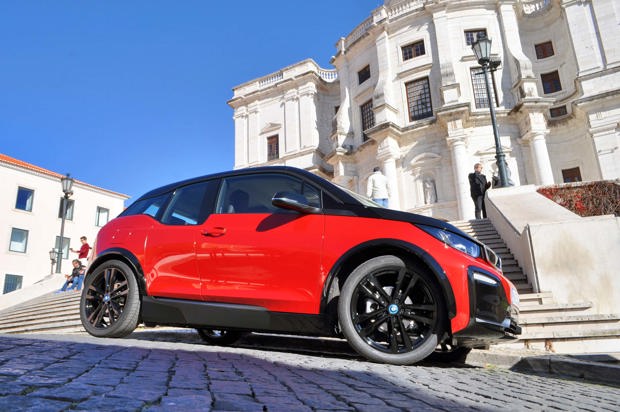
EVs run solely on their batteries and must be recharged by plugging them in once they’re depleted. The BMW i3 is available with an optional range-extending gasoline engine and we have both versions, listed under EV and PHEV.
The approximate charging times given are for 240-volt, which is a home charging station (available through the auto manufacturer or third-party vendors) or most public charging stations. Many EVs can be charged at a fast-charge DC (direct current) station, if you can find one (they’re very expensive to install and subsequently very rare), but the vehicle itself has to be support DC quick-charging and not all do.
This DC charging comes in two types: CHAdeMO and SAE Combo, and while most modern quick chargers offer both types of “nozzles”, some older ones are one or the other. Generally, all these 480-volt quick chargers bring a depleted battery back up to 80 percent of its capacity in about half an hour.
| Vehicle | Base MSRP | Range (km) | Charging Time (hours) |
|---|---|---|---|
|
BMW i3 |
$51,568 |
290 |
5 |
|
BMW i3s |
$55,168 |
280 |
5 |
|
Chevrolet Bolt |
$44,300 |
383 |
9.3 |
|
Ford Focus Electric |
$34,998 |
185 |
5.5 |
|
Hyundai Ioniq EV |
$35,649 |
200 |
4 |
|
Kia Soul EV |
$35,895 |
179 |
5 |
|
Nissan Leaf |
$35,998 |
242 |
8 |
|
Smart ForTwo EV Cabriolet |
$32,050 |
92 |
3 |
|
Smart ForTwo EV Coupe |
$29,050 |
93 |
3 |
|
Tesla Model 3 Long Range* |
$64,100 |
500 |
10 |
|
Tesla Model 3 Long Range AWD* |
$69,400 |
500 |
10 |
|
Tesla Model 3 Long Range AWD Performance* |
$84,800 |
500 |
10 |
|
Tesla Model S 75D |
$100,950 |
417 |
10 |
|
Tesla Model S 100D |
$126,300 |
539 |
13.5 |
|
Tesla Model S P100D |
$176,000 |
507 |
13.5 |
|
Tesla Model X 75D |
$110,200 |
383 |
10 |
|
Tesla Model X 100D |
$131,700 |
475 |
13.5 |
|
Tesla Model X P100D |
$189,600 |
465 |
13.5 |
|
Volkswagen e-Golf |
$36,355 |
201 |
4.5 |
| *NRCan figures for Tesla Model 3 not yet available. EPA range used; Model S charging time used, based on similar battery capacity and charging hardware. | |||
Plug-In Hybrids
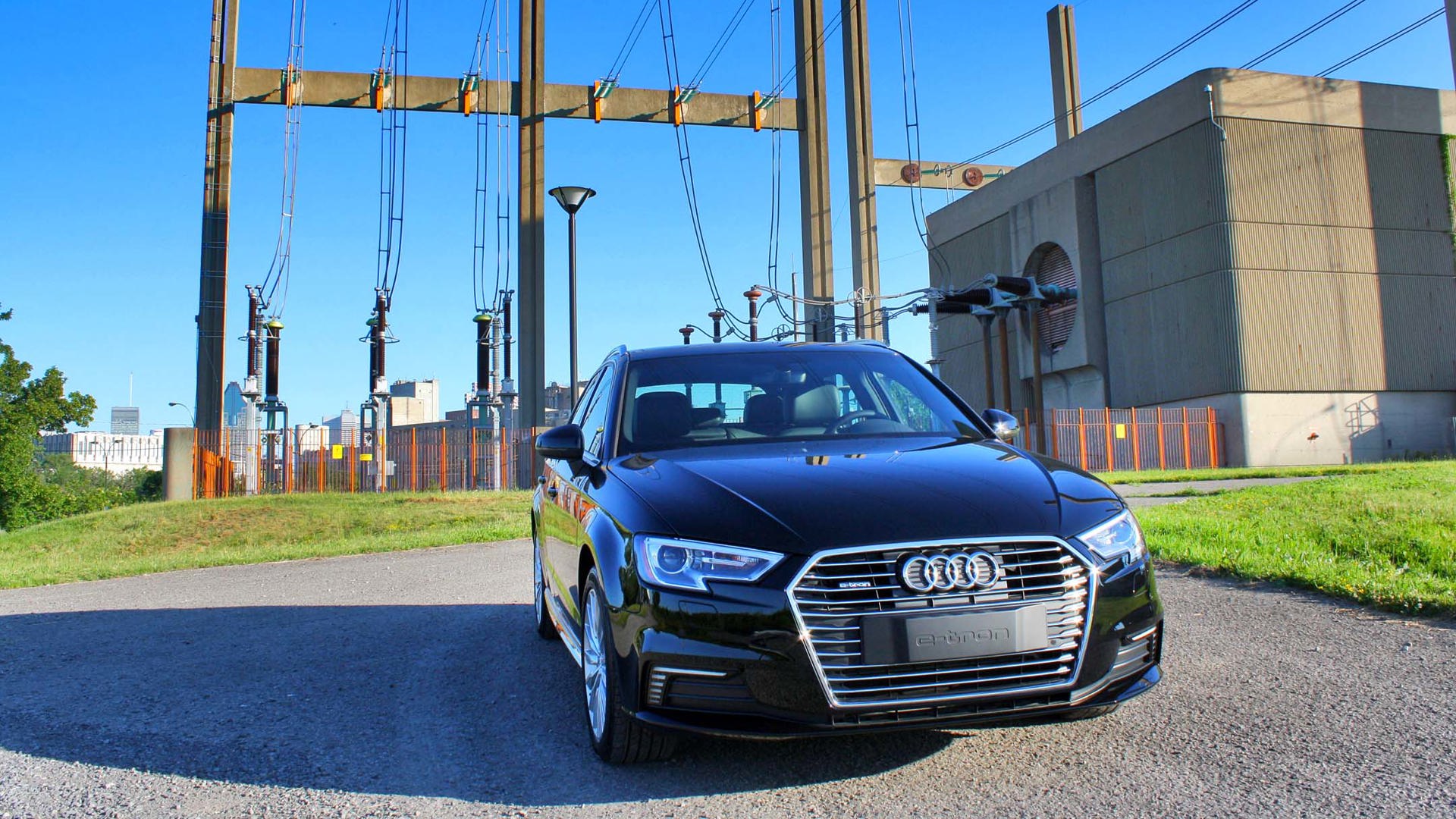
PHEVs are hybrids with extra battery capacity and a port to charge the battery directly from a power source. After they’ve been charged by plugging into an outlet, they can run on electricity alone for a short period. Once that charge runs out, they revert to conventional gasoline–electric hybrid operation.
While their electric-only range is much less than that of an EV, many people who travel shorter distances and who charge their cars regularly can drive almost exclusively on electric-only. (If this happens, the gasoline engine will occasionally start up and run for a short period to keep its fluids circulating.)
Exactly how PHEVs use the stored electrical charge depends on how the manufacturer has configured the vehicle. Some use it all at once from the time you first start driving. Some allow you to “save” it: for example, you could choose hybrid operation on the highway, and then switch to electric-only once you get into the city. When the stored charge runs out, most vehicles require recharging before you get that electric-only range again, but a few can use regenerative braking or engine power to replenish that charge and give you a bit more electric-only driving.
All PHEVs continue to run when the stored charge depletes, as long as there’s gasoline in the tank. On extended-range vehicles like the Chevrolet Volt or BMW i3 REx, the engine works like a generator, making more electricity to power the car’s electric motor.
Because the electric-only range is much lower, PHEV batteries are smaller than those in EVs and take less time to charge. They can be charged on 240-volt but generally are not equipped for fast-charging, with the current exceptions of the Mitsubishi Outlander PHEV and BMW i3 REx. The chart below shows both the range on electricity, and then on hybrid or extended-range operation once the stored charge runs out. We’ve included some upcoming models from BMW, Mercedes-Benz, and Porsche with the manufacturers’ estimates of their range.
| Vehicle | Base MSRP | Electric Range (km) | Gasoline Range (km) | Charging Time (hours) |
|---|---|---|---|---|
| Audi A3 e-tron | $40,900 | 26 | 623 | 2 |
| BMW i3 REx | $56,168 | 156 | 129 | 5 |
| BMW i3s REx | $59,768 | 156 | 129 | 5 |
| BMW i8 | TBA | 29 (est.) | TBA | 3 |
| BMW 330e | $54,699 | 23 | 533 | 2 |
| BMW 530e xDrive | $70,699 | 24 | 554 | 2 |
| BMW 740e xDrive | $113,599 | 23 | 525 | 3 |
| BMW X5 xDrive40e | TBA | 23 | 842 | 3 |
| Cadillac CT6 Plug-In | $86,770 | 50 | 642 | 4.5 |
| Chevrolet Volt | $38,995 | 85 | 591 | 4.5 |
| Chrysler Pacifica Hybrid | $51,445 | 53 | 858 | 2 |
| Ford Fusion Energi | $35,088 | 35 | 947 | 2.5 |
| Honda Clarity Plug-In | $39,900 | 77 | 475 | 2.5 |
| Hyundai Ioniq Electric Plus | $31,999 | 47 | 961 | 2.3 |
| Karma Revero | $149,000 | 60 | 328 | 3.7 |
| Kia Optima Plug-In | $42,995 | 47 | 935 | 2.7 |
| Mercedes-Benz GLC 350e 4Matic | $59,900 | 34 | TBA | 2 |
| Mercedes-Benz GLE 550e 4Matic | $83,900 | 19 | 719 | 1.9 |
| Mini Cooper S E Countryman All4 | $43,490 | 19 | 420 | 3 |
| Mitsubishi Outlander PHEV | $42,998 | 35 | 463 | 3.5 |
| Porsche Cayenne E-Hybrid | $91,700 | 44 | 768 | 2.3 |
| Porsche Panamera 4 E-Hybrid | $113,400 | 50 | TBA | 2.4 |
| Toyota Prius Prime | $32,990 | 40 | 995 | 2 |
| Volvo S90 T8 AWD | $74,950 | 34 | 621 | 3 |
| Volvo XC60 T8 AWD | $70,250 | 27 | 534 | 3 |
| Volvo XC90 T8 AWD | $74,950 | 27 | 547 | 3 |
| *Manufacturer-provided figures used for announced vehicles not yet on sale. | ||||
